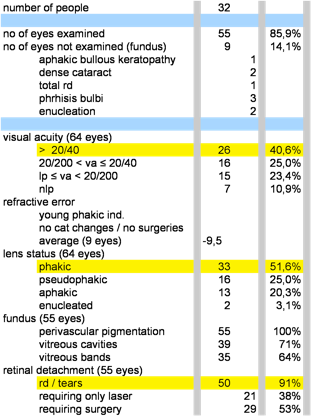news
page last modified Jan 306th 2010
Wagner syndrome


















Induced neuronal cells
Scientists from Stanford University in California have found a way to bypass the need for -possible cancer inducing- stem cells. Reed more: 20100130newsflash.pdf
‘new’ families
Durham, NC, USA
An article about a new American family (6 people, 3 generations) with Wagner was published in November 2009 by the people from Duke’s eye hospital in Durham, North Carolina. They reported a unique base pair substitution in intron 8: c.9265+1G>T. This is the same base pair as in the families from Zürich and Cambridge. only with them the G was replaces by an A. The authors speak of a mutational Hot-Spot:
Shawn M. Ronan; Khanh-Nhat Tran-Viet; Erica L. Burner; Ravikanth Metlapally; Cynthia A. Toth; Terri L. Young
Mutational Hot Spot Potential of a Novel Base Pair Mutation of the CSPG2 Gene in a Family With Wagner Syndrome
Arch Ophthalmol. 2009;127(11):1511-1519.
For an abstract (poster) of this article, see: new publications.
Nijmegen, the Netherlands
Through this website another Dutch family (30 people) came about. None of them was ever mentioned in a publication. A proband has been tested and it appeared that this family also belongs to the pedigree of the founder mutation (c.4004-5T>C)
Paris, France
In the meeting of the French Society of Ophthalmology (SFO) in May 2009 a second French family (9 people, 6 with retinal detachment, 5 with a raised IOP) with Wagner syndrome was reported. A new phenomenon they reported was a chronic disrupture of the blood-aqueous barrier (bab). Normally this happens during inflammation. But apart from one case with uveïtis, this was not a feature in the other eight people. There can be a correlation with elevated intraocular pressure. As the protein and other components that appear in the aqueous when the bab is disrupted can influence the aqueous outflow.
For an abstract (poster) of this article, see: new publications.
Thus far they only published about it in French (Journal Français Ophtalmologie)






